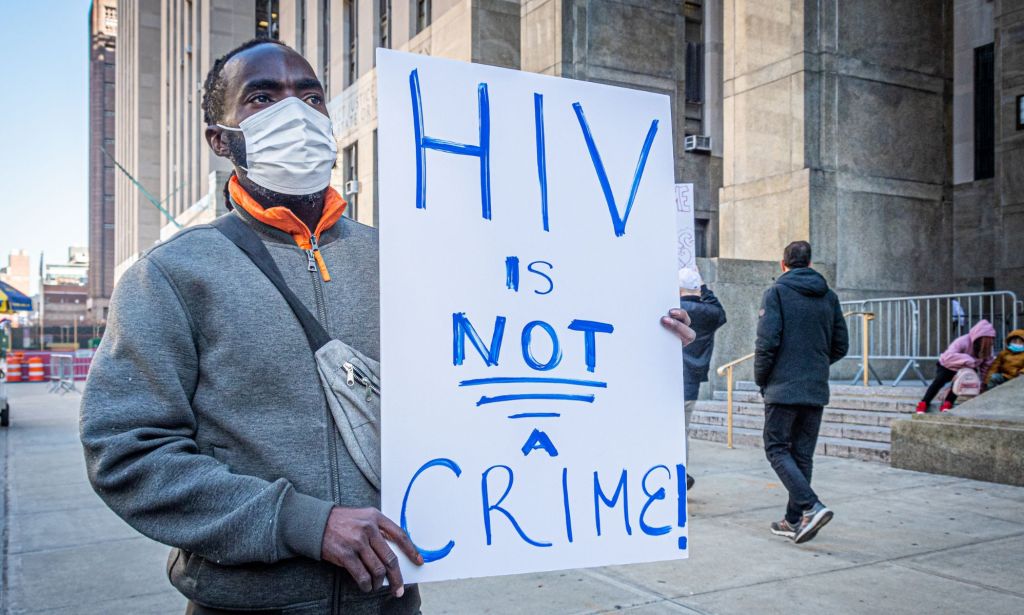Trans women receiving gender-affirming care less likely to contract HIV, study finds

HIV prevalance in trans women is reportedly high. (Getty)
HIV diagnosis rates among trans women in America are worryingly high, according to a new study.
Research published in The Lancet HIV revealed that, each year, 0.55 per cent of trans women in the US contract the virus, which can lead to Aids.
It also found that those who sought gender-affirming care were less likely to contract HIV, possibly due to economically or socially vulnerable women being less able to access care and HIV-preventative medication.
Advocacy groups praised the research, led by Dr Andrea Wirtz, as a comprehensive look into a community that is rarely considered in HIV studies.
Matthew Hodson, the executive director of UK HIV charity Aidsmap, told PinkNews that the study could help build a more accurate picture of how the virus affects gender-diverse groups.
“Poor reporting and misgendering trans people has, too often, meant that data on HIV prevalence among trans and gender diverse communities is unreliable,” he said.
“Recent reports on new infections among trans women, and HIV incidence among trans men, are helping to build a more accurate picture and highlight that trans people remain more vulnerable to HIV than the general cis population.”
Researchers looked at 1,312 HIV-negative trans women across six cities in the US over a two-year period beginning in 2018, occasionally scheduling in-person or online health check-ups.
By the end of the study, 15 people showed signs of HIV infection, seven of them had not taken the preventative medication, PrEP, while others had previously taken the drug but were no longer using it.
Nine of the women with a positive HIV test died from circumstances unrelated to HIV, including murder and suicide – amounting to 0.33 per cent of the study group.

An Aidsmap report noted that discrimination and stigma contributed to many of the deaths, due to hate crimes and poor access to healthcare.
It revealed that about 14 per cent of trans women are currently living with HIV in the US, while also mentioning that they are a priority population in the US HIV strategy.
Information from the Centers for Disease Control and Prevention found that, in 2019, 19 per cent of new HIV diagnoses were cisgender and transgender women.
Of the 36,801 new HIV diagnoses in the US and dependent areas that year, at least 671 (two per cent) were transgender people, including trans men and non-binary people.
Meanwhile, the Human Rights Campaign reported that trans women are nearly 49 times more likely to have HIV than the general population.
Additionally, despite trans men being less likely to have an HIV-positive diagnosis than trans women, their rate of infection is still also higher than the general population.
Trans groups show a higher HIV prevalence but action plans rarely consider them
Hodson noted that the high prevalence may also be due to the likelihood of trans women belonging to other marginalised groups that have an elevated HIV risk.
“Trans communities experience high rates of intimate-partner violence, economic dependence, drug use, insecure housing and poor emotional health and are more likely to be involved in sex work,” he explained.
Similar studies looking into the HIV prevalence of trans men who have sex with men also showed an increased risk.
A report from researchers in New York found that 2.8 per cent of trans men who sought HIV care between 2009 and 2010 tested positive, compared with 0.41 per cent of cis men.
Another research paper, from the Robert Koch Institute, in Germany, found that only 24 per cent of trans men found it easy to access HIV care in the US.
In terms of HIV, disengagement from health services is “potentially fatal”, Hodson said. “Ensuring appropriate, affirmative healthcare for trans people is vital and urgent, considering these high HIV rates.”
He added that to mitigate future cases, organisations should help combine gender-affirming care with sexual health to improve access to preventative medicine.
“Trans-led services understand trans bodies and can provide assurance that trans people will be welcomed,” Hodson said. “Combining gender-affirmative healthcare with sexual health can improve engagement and may lead to better uptake of HIV prevention tools such as PrEP.”

